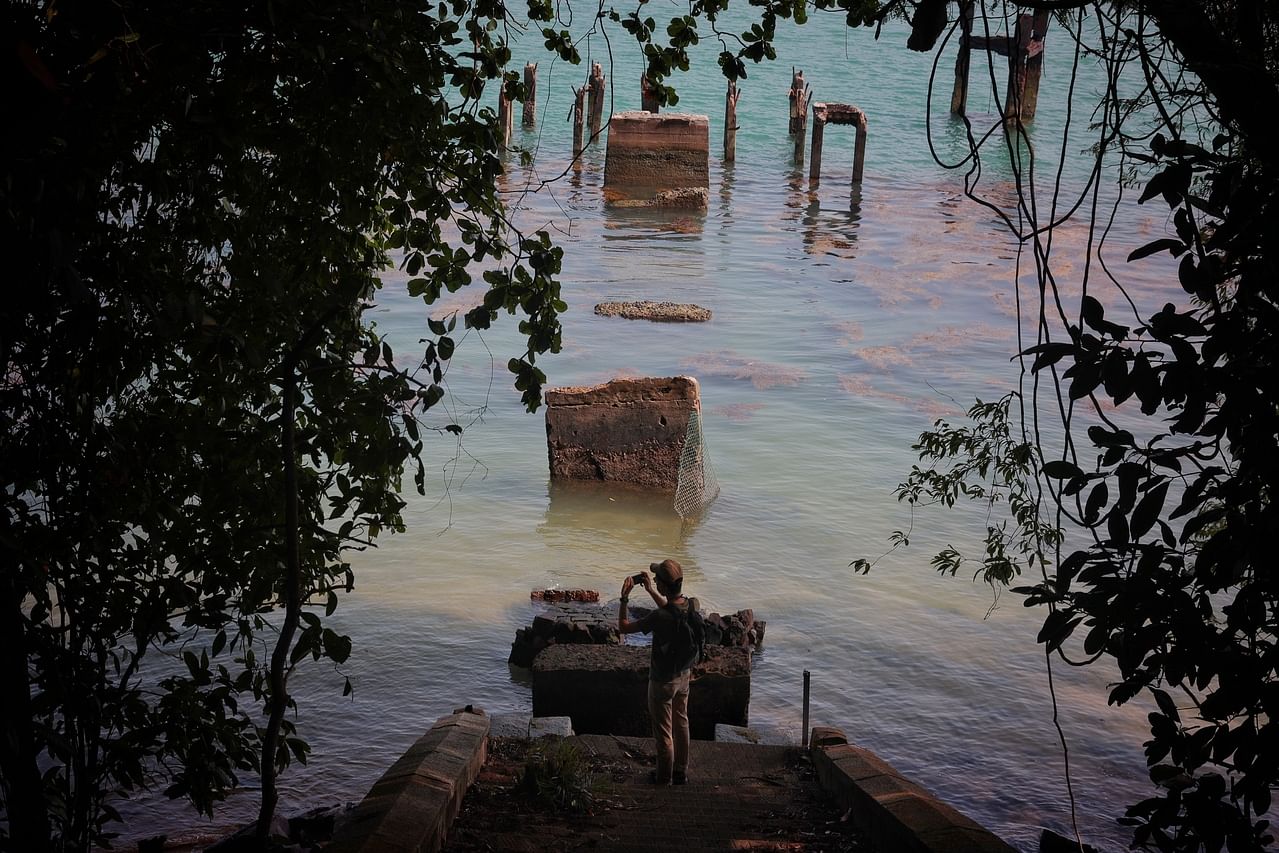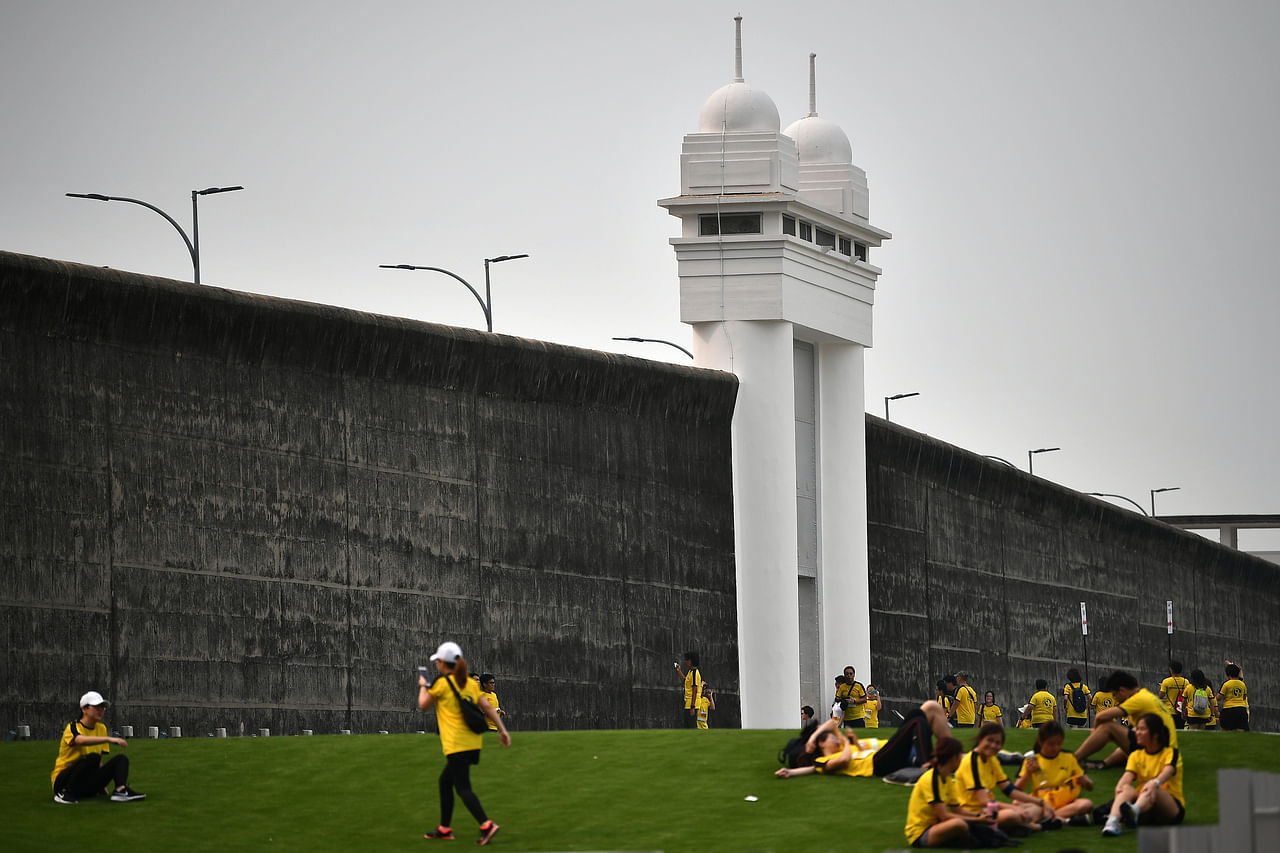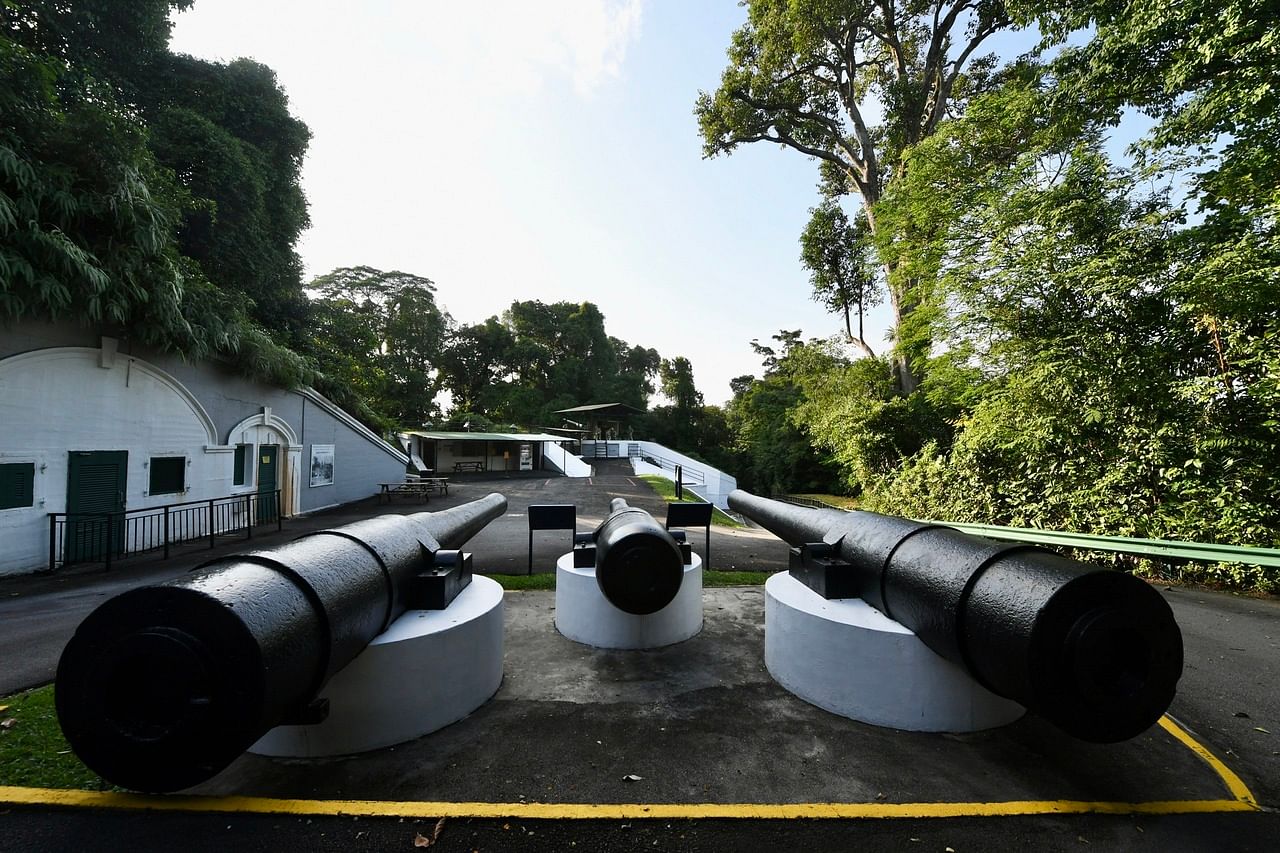SINGAPORE - Fort Siloso on Sentosa is set to be gazetted Singapore's 74th national monument next month.
The National Heritage Board (NHB) on Tuesday (Jan 18) announced its proposal to gazette the 19th-century fort a monument, in remembrance of the nation's war years and as a lasting testament to Singapore's military heritage.
Here are seven things to know about the fort on Sentosa's western coast.
1. It began with a bang

The western end of Pulau Blakang Mati (island behind death) - Sentosa's former name - was chosen as a site for a fort in the late 1800s as it overlooked the western entrance to Singapore's harbour alongside Fort Pasir Panjang. About 8,600kg of gun powder was used to level the top of Mount Siloso - where the fort is now located and after which it was named
In the absence of roads, construction materials for the fort were delivered by boat and dropped off at a jetty. Stairs leading to the jetty survive today.
2. More than just guns

While Fort Siloso today is largely known for its gun displays - it even houses Japanese guns found in Mandai - it was home to other weapon systems.
In Fort Siloso's Tunnel A Complex is a submarine mine defence casement, which was used by British troops to prepare and inspect electrically operated mines that were laid between Fort Siloso and Pasir Panjang.
3. Saw action during World War II

Despite being built to defend Singapore from a seaward attack, its guns were turned towards the mainland during World War II to fire at advancing Japanese troops in Singapore's west. The six-inch gun emplacement was used to fire on the advancing Japanese army as well as to destroy the Pulau Bukom refinery to prevent capture by the Japanese.
4. One of several forts on Pulau Blakang Mati

Also built to defend Singapore's harbour in the late 1800s were Fort Connaught, Fort Serapong and Imbiah Battery. Imbiah Battery's functions were taken over by Fort Connaught in the 1930s. Part of Sentosa Golf Club's New Tanjong Course covers what was Fort Connaught's site, while portions of Fort Imbiah and Fort Serapong remain.
5. Former monorail station

Today known as the Surrender Chamber, where visitors can learn about the British surrender in 1942 and the Japanese surrender in 1945, a two-storey structure in Fort Siloso was formerly one of seven monorail stations serving Sentosa. The monorail was in operation from 1982 to 2005.
6. Singapore's 8th World War II-related monument

When gazetted, Fort Siloso will be Singapore's eighth World War II-related monument. The seven current monuments are: Changi Prison's Entrance Gate, Wall and Turrets, the Civilian War Memorial, Former Command House, Former Admiralty House, Former Cathay Building, Former Ford Factory and the Esplanade Park Memorials, including the Cenotaph, and Lim Bo Seng Memorial (Tan Kim Seng Fountain is also gazetted but is not war-related).
7. Singapore's first proposed national monument

Amendments to the Preservation of Monuments Act last year granted proposed monuments - a new category of protected buildings and sites - legal protections similar to that of gazetted monuments.
This means that Fort Siloso is now protected from unauthorised works that may affect its character and significance, after its management - Sentosa Development Corporation - was served a written notice on Monday conveying NHB's intention to gazette it a monument.
Owners and occupiers of the proposed monument, as well as the general public, may also give their feedback on NHB's proposal to gazette a monument after the board has announced its intention. The board said on Tuesday that this is part of efforts to be more inclusive and consultative in the process of gazetting monuments.
Feedback on Fort Siloso can be e-mailed to NHB_Feedback@nhb.gov.sg, and substantive objections should be sent by Jan 31.
Sources: Roots.gov.sg, www.fortsiloso.com


